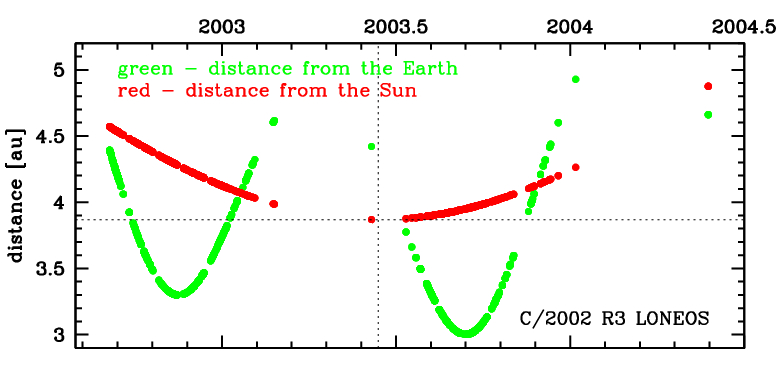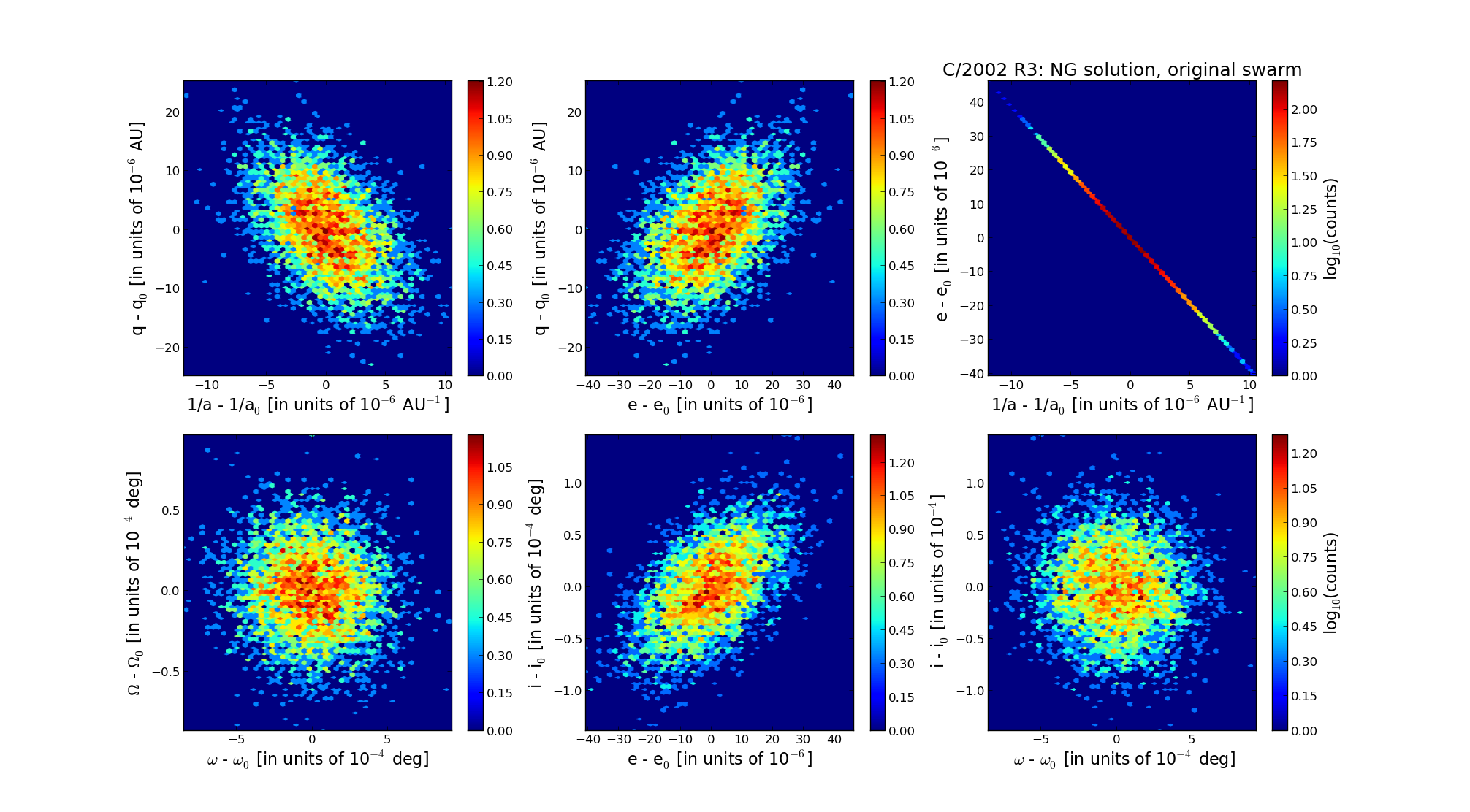C/2002 R3 LONEOS
more info
C/2002 R3 was discovered on 4 September 2002 by the LONEOS as an apparently asteroidal object. A few days later its cometary apperance was reported by observers [IAUC 7970, 2002 September 14].
This comet made its closest approach to the Earth on 13 September 2003 (3.004 au), three months after perihelion.
Solution given here is based on data spanning over 1.7 yr in a range of heliocentric distances: 4.57 au – 3.869 au (perihelion) – 4.88 au.
This Oort spike comet suffers slight planetary perturbations during its passage through the planetary system; however, they can lead to escape of the comet from the solar system on hiperbolic orbit (see future barycentric orbit).
See also Królikowska 2014 and Królikowska and Dybczyński 2017.
This comet made its closest approach to the Earth on 13 September 2003 (3.004 au), three months after perihelion.
Solution given here is based on data spanning over 1.7 yr in a range of heliocentric distances: 4.57 au – 3.869 au (perihelion) – 4.88 au.
This Oort spike comet suffers slight planetary perturbations during its passage through the planetary system; however, they can lead to escape of the comet from the solar system on hiperbolic orbit (see future barycentric orbit).
See also Królikowska 2014 and Królikowska and Dybczyński 2017.
| solution description | ||
|---|---|---|
| number of observations | 1274 | |
| data interval | 2002 09 04 – 2004 05 24 | |
| data type | perihelion within the observation arc (FULL) | |
| data arc selection | entire data set (STD) | |
| range of heliocentric distances | 4.57 au – 3.87 au (perihelion) – 4.88 au | |
| type of model of motion | NS - non-gravitational orbits for standard g(r) | |
| data weighting | YES | |
| number of residuals | 2530 | |
| RMS [arcseconds] | 0.52 | |
| orbit quality class | 1a | |
| orbital elements (barycentric ecliptic J2000) | ||
|---|---|---|
| Epoch | 1699 10 01 | |
| perihelion date | 2003 06 13.16067000 | ± 0.00146800 |
| perihelion distance [au] | 3.87017657 | ± 0.00000698 |
| eccentricity | 0.99981363 | ± 0.00001189 |
| argument of perihelion [°] | 44.821560 | ± 0.000251 |
| ascending node [°] | 54.088264 | ± 0.000025 |
| inclination [°] | 161.179102 | ± 0.000037 |
| reciprocal semi-major axis [10-6 au-1] | 48.16 | ± 3.07 |
| file containing 5001 VCs swarm |
|---|
| 2002r3n2.bmi |

